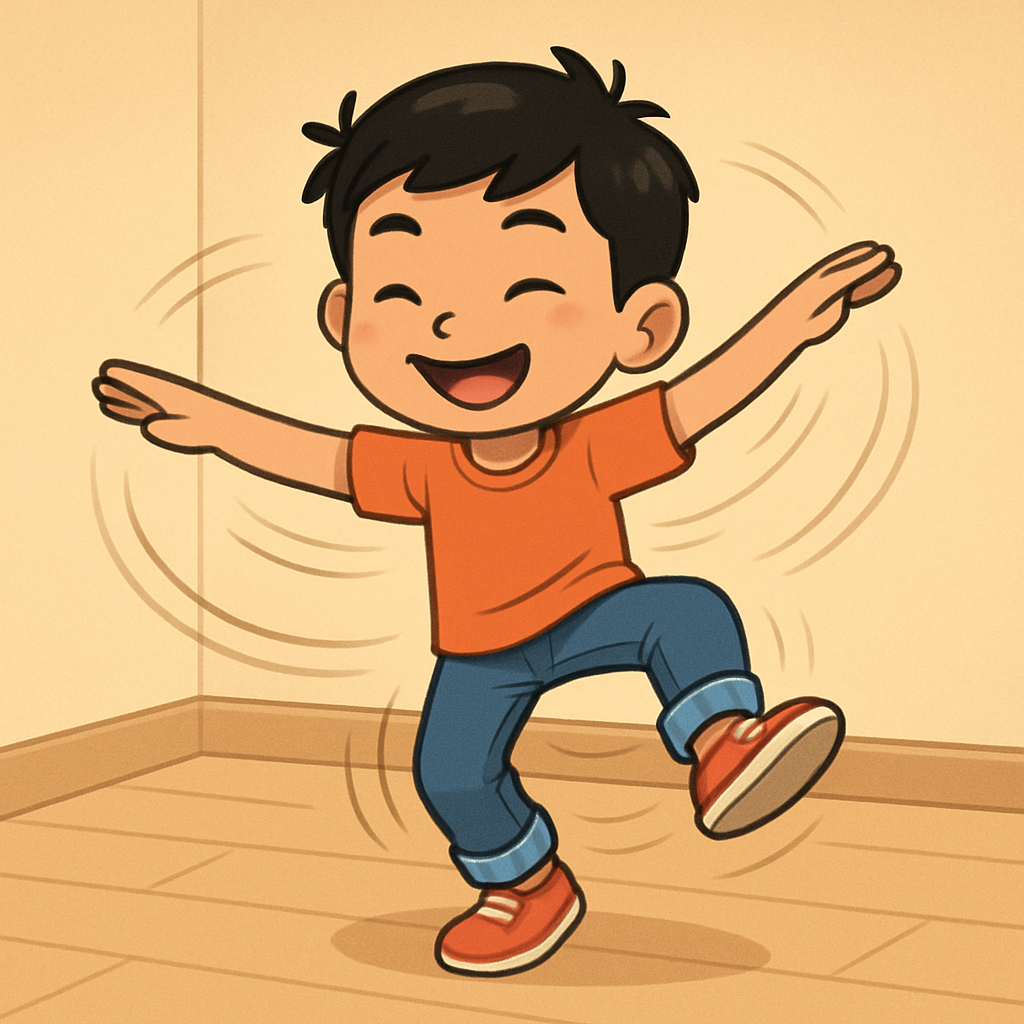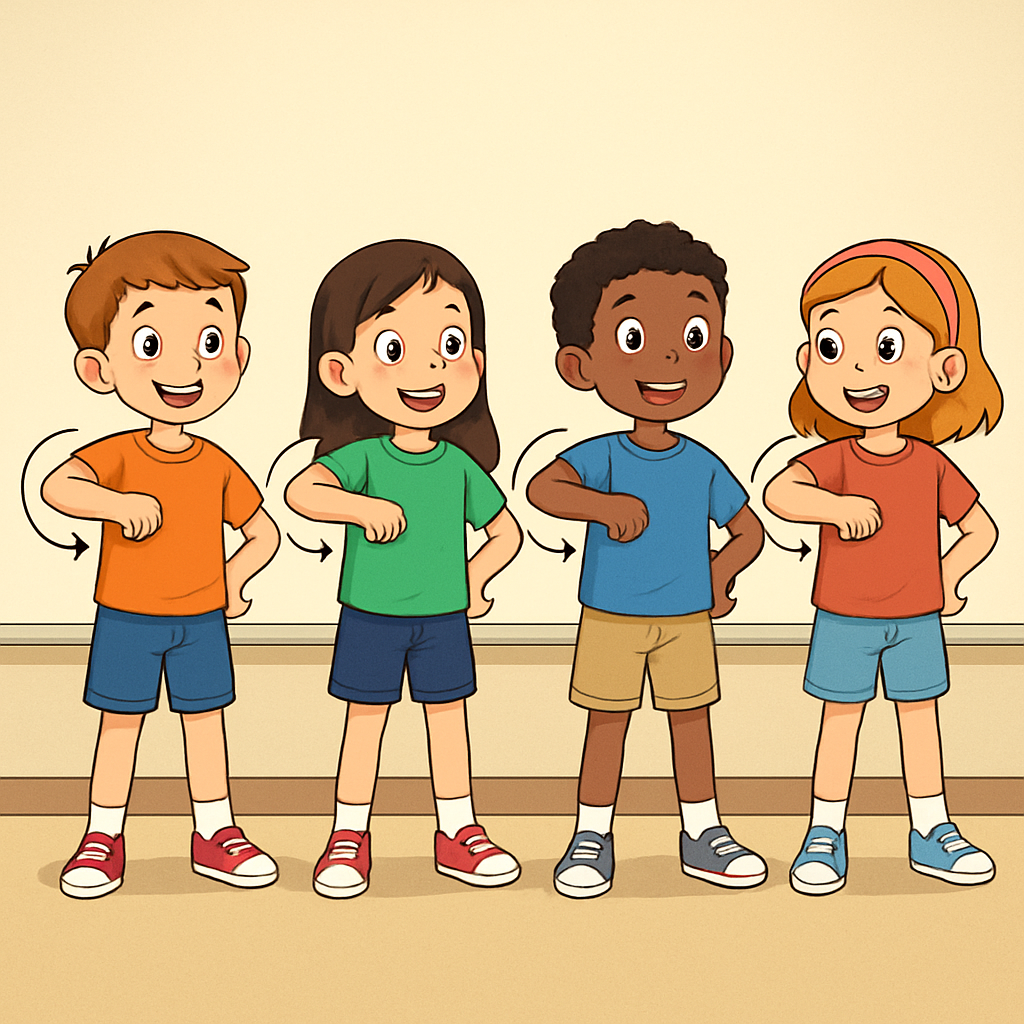 Today, you'll guide your students in exploring loops through dance coding.
Today, you'll guide your students in exploring loops through dance coding.
Start by revising the dance sequences from the last lesson.
Explain that a loop is a way to repeat a set of instructions multiple times without writing them out each time—it makes our code shorter and more efficient.
Say to the class: “Remember how we followed dance moves in order last time? Today, we're adding loops to repeat parts of our dances, like repeating a chorus in a song!”
Clear some space in the classroom for movement and ensure everyone has room to dance safely.
Display a simple dance sequence from the previous lesson on the board, like Jump → Clap → Spin. Demonstrate it once.
Now introduce a loop: “What if we want to repeat 'Clap → Spin' three times? We can use a loop!” Write it on the board as: Jump → Loop 3 times (Clap → Spin).
Model the sequence slowly: Do the jump, then repeat clap and spin three times. Have the class mirror you. Say the steps out loud: “Jump... Now loop: Clap, Spin; Clap, Spin; Clap, Spin.”
If anyone gets confused, say “Bug—reset!” and start over. Do it twice slowly, then once at a normal pace.
Below is an updated version of the Random Dance Generator from the previous lesson. This version of the generator includes Loops to challenge your students!
Generate and Read the sequence aloud and demonstrate. Have the class follow along slowly at first, then faster. Encourage them to count the loop repetitions.
Try out different variations of loops with the class!
Divide the class into small groups of 3-4 students. Give each group paper and markers to create their own dance sequence with at least one loop.
Instruct them: “Come up with 4-6 moves, including a loop to repeat some moves. Draw pictures or write the names, and note how many times to loop.”
Allow 10-15 minutes for planning. Then, have each group perform their coded dance for the class. The class can try following along.
Discuss: “How did the loop make your dance better or easier to code?”
 Congratulate the students on creating their dances with loops. Now facilitate sharing: Have groups take turns presenting at the front. Instruct them to show and teach their dance sequence to the class, with everyone trying to dance along.
Congratulate the students on creating their dances with loops. Now facilitate sharing: Have groups take turns presenting at the front. Instruct them to show and teach their dance sequence to the class, with everyone trying to dance along.
Lead a discussion: Ask how the loop made their dance easier and more fun. Encourage them to think of other places loops are used, like in songs or games.